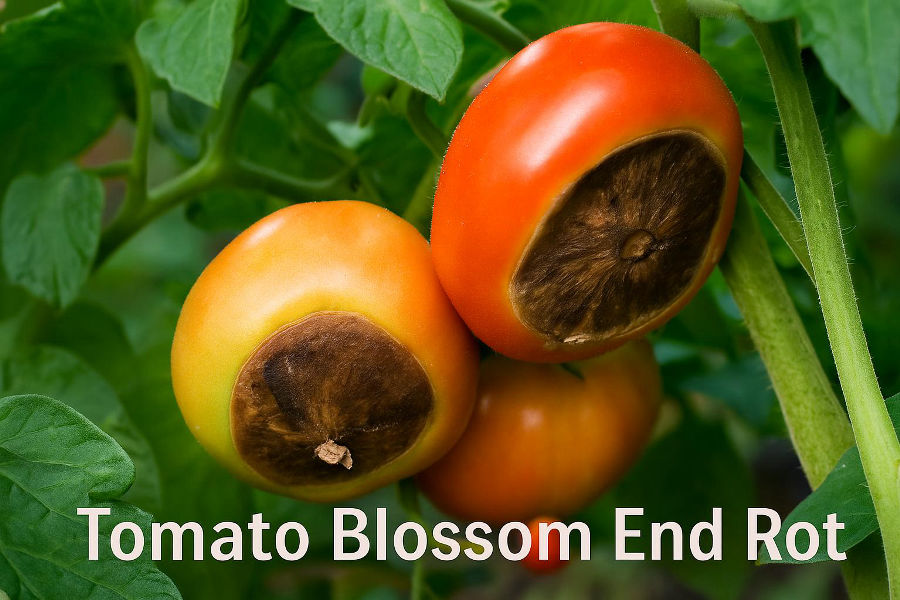Blossom End Rot in Tomatoes: Causes, Symptoms, and solution
Blossom End Rot is a common disorder in tomatoes where the bottom (blossom end) of the fruit turns black, sunken, and leathery. It’s not a disease but a physiological problem caused by calcium deficiency in the developing fruit.
Causes:
-
Calcium deficiency in fruit, even if soil has enough calcium.
-
Irregular watering – dry spells followed by heavy watering.
-
Rapid plant growth due to high nitrogen or warm weather.
-
Root damage or poor root uptake.
Symptoms:
-
Dark, sunken spot at the bottom of the tomato.
-
Usually appears on green or early-ripening fruits.
-
Fruits become unmarketable.
Prevention & Control:
-
Maintain consistent watering – avoid drought stress.
-
Apply calcium fertilizers like calcium nitrate or calcium chelated sprays.
-
Mulch the soil to keep moisture steady.
-
Avoid over-fertilizing with nitrogen-rich fertilizers.
-
Use balanced nutrients – ensure good root health.
Blossom End Rot can be frustrating, but with good watering habits and timely calcium management, it can be easily prevented.
